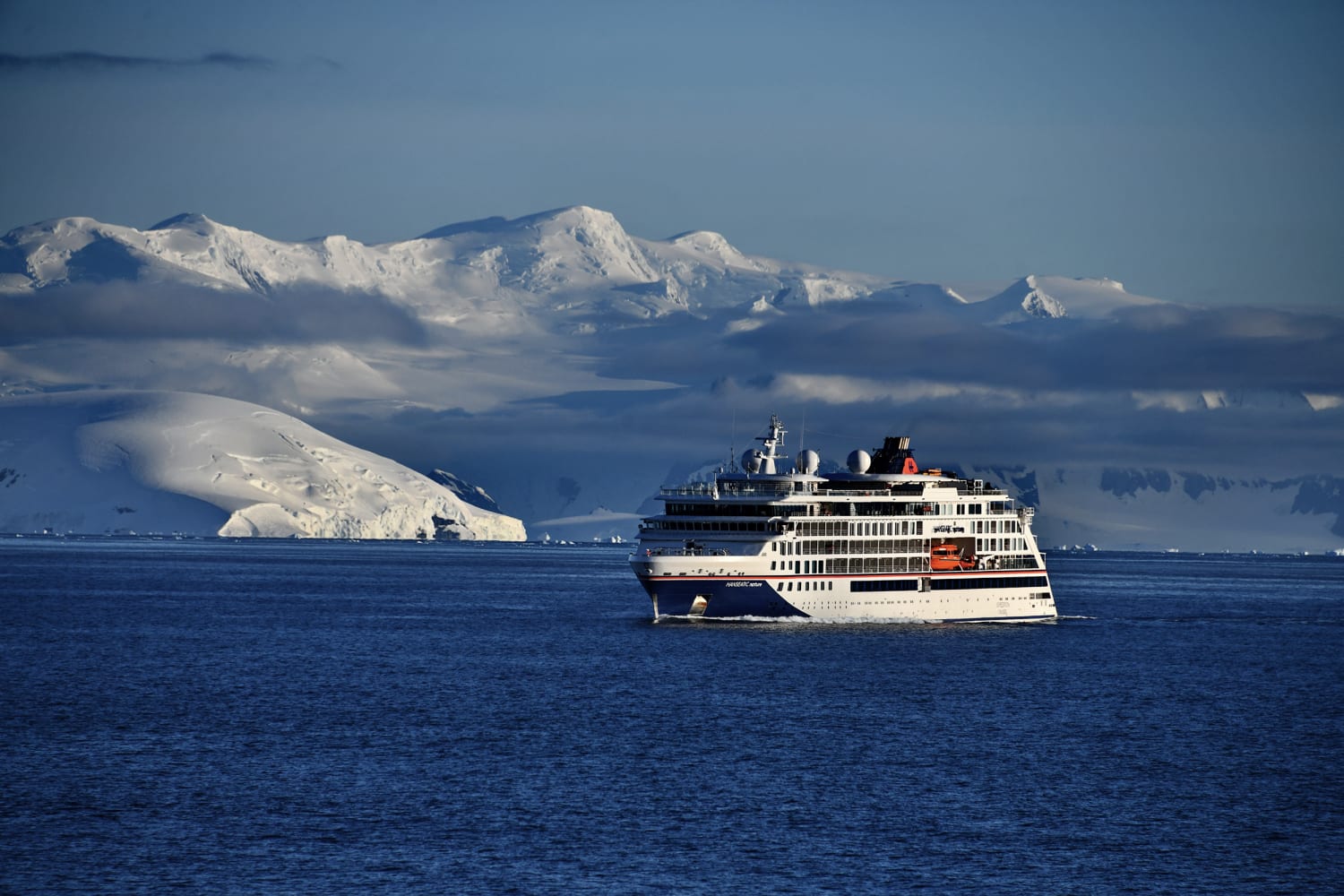[ad_1]

Videos showing the turbulent journey to Antarctica have taken off on TikTok in recent weeks, with multiple creators sharing footage of their boat rides through the Drake Passage.
But why does it seem like so many travel vloggers are suddenly visiting Antarctica?
The Drake Passage is the body of water between the southernmost tip of Chile and Antarctica’s northern peninsula. Travel company Oceanwide Expeditions describes the Drake Passage as a “lively little waterway” and the “gateway to the Antarctic.”
Depending on the weather and other seasonal conditions, passengers can experience the “Drake Lake,” a placid, smooth journey, or the perilous “Drake Shake.” Last week, a “rogue wave” left one cruise ship passenger dead and four injured.
Despite the dangers, travel content about Antarctica is gaining popularity on TikTok.
In a video about crossing the Drake Passage posted last week, vlogger Natasha Alden showed viewers clips of waves crashing against her cabin windows and passengers “holding on for dear life” at the ship’s breakfast buffet. The video has 12.6 million views.
Earlier this week, travel influencer Alyssa Ramos posted a video captioned, “Why is the Drake Passage so dangerous?” The TikTok, which now has over 3 million views, showed Ramos sliding back and forth on the deck of a boat as waves crashed against the vessel.
Then, in a video posted Wednesday, TikTok creator Jordan Newton vlogged her Antarctic ice camping experience. The video has nearly 1 million views.
Many TikTok users expressed fascination with the Antarctic travel content, but were also perplexed with the sudden influx of videos about visiting the largely barren continent.
“Was there like a groupon to the drake passage or something,” one TikTok user commented on Ramos’ video.
Another user commented on Newton’s video about ice camping: “It’s getting to the point where I’m having dreams about the Drake Passage every night because I’m so deeply on Antarctica tok.”
Responding to comments asking why “literally everyone is in Antarctica right now,” Alden explained that the season to safely travel there is “relatively short.” In the Southern Hemisphere, around the end of October to early November the “sea ice opens up just enough to allow ships to navigate safely,” she said. The warm season wraps in early March.
“Then it’s winter time again, and the average winter temperature at the South Pole is -49 C,” Alden continued.
Ramos offered a different explanation in a video posted Thursday. Antarctic tour companies are targeting travel influencers “for the first time in history,” she said, to host group trips and promote traveling to the continent. Ramos worked with travel company Chimu Adventures, according to her blog post, to plan the 11-day excursion. The trip costs between $8,230 to $11,755 per person. In a video posted earlier this year, Ramos said she was paid $45,000 in commission to “get people to sign up” for an excursion.
“This comes as a shock to me because three years ago, they told me they didn’t want to work with me because their demographic was older, mostly male and retired couples,” Ramos said. “So now that we have all our guests coming, we have lowered the age demographic down and I have now hosted over 100 mostly women in Antarctica, who all have social media — which is why you’re probably seeing it all over.”
In wake of the influx of travel content about Antarctica, some on TikTok have raised concerns over the environmental impact of Antarctic tourism.
A report posted in “Nature Communications” this year found that the black carbon content — soot from vehicles, power generators and other machinery — is higher in snow surrounding research facilities and “popular shore tourist-landing sites” than levels measured “elsewhere in the continent.”
The researchers estimated snow around research and tourist sites is melting faster and in larger quantities than snow that isn’t located in those areas.
The number of tourists to Antarctica between 2015 and 2020 doubled, the science site Inverse reported, and unless research stations and travel companies move away from using fossil fuel, the pollution will only get worse.
Another study published in “Antarctic Science” this year found that tourists “could be disturbing” the penguins on one of the continent’s most popular islands. Human presence may cause penguins to be scared, distracted and temporarily abandon their chicks and eggs.
“We need the world’s social and ecological scientists to collaborate to further examine whether tourism is threatening the Antarctic,” the study’s co-author Yu-Fai Leung said in a North Carolina State University press release.
In a post responding to Ramos’ video about the Drake Passage, TikTok creator jijis.m0m showed screenshots of articles about pollution in Antarctica.
“the voyage there should tell them they ain’t wanted,” they said in a comment, referring to the treacherous waters.
 Latest Breaking News Online News Portal
Latest Breaking News Online News Portal




